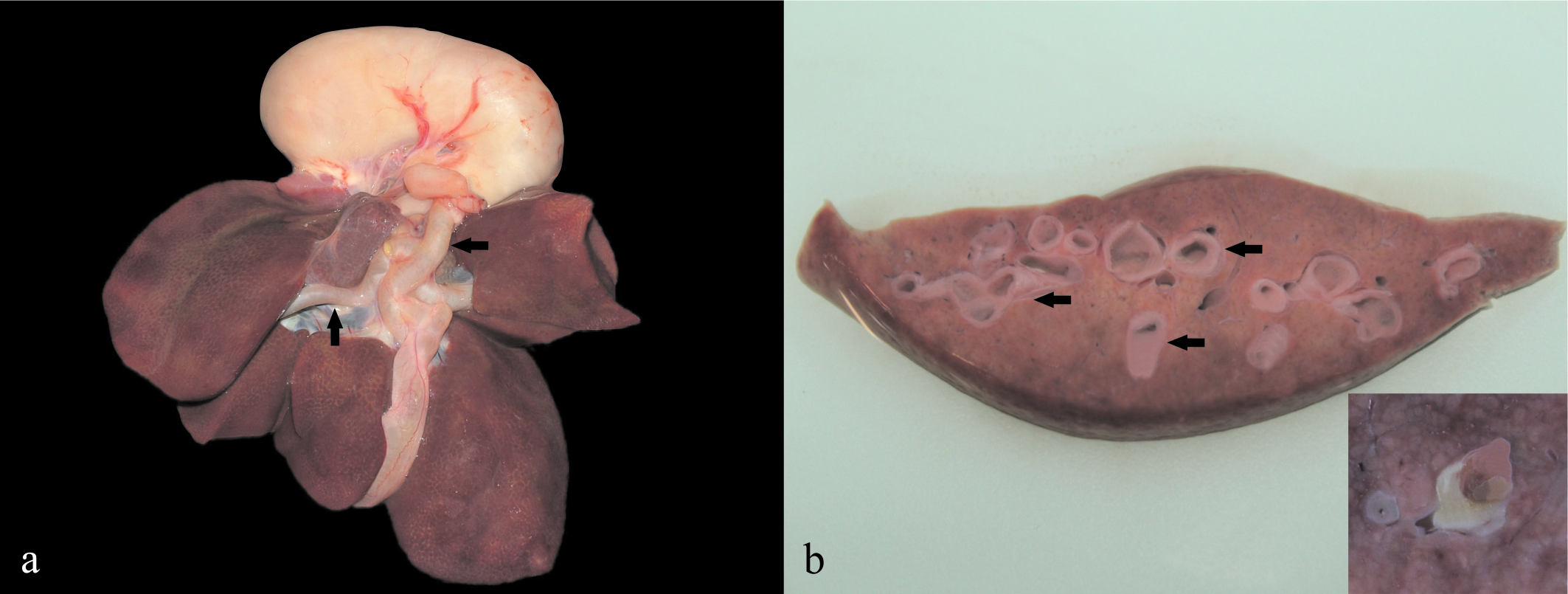Abstract
Platynosomiasis is a common feline hepatic disease caused by Platynosomum fastosum (Trematoda - Dicrocoelidae), which is also known as ‘lizard poisoning’. Most reports of feline platynosomiasis show that this disease is sporadic and manifests with uncommon lesions; its pathogenicity is still not well understood. This study aimed to describe liver injuries and enzymatic changes associated with natural P. fastosum infection in 47 stray cats in an endemic area. Overall, 38.3% (18/47) of cats were parasitized, and 2,358 flukes (P. fastosum) were collected (131 – mean intensity of parasitism; 50.2 – mean abundance). The alanine transaminase (ALT) measure was significantly higher in parasitized animals, while alkaline phosphatase (ALP) showed no statistical difference between parasitized and non-parasitized animals. In infected animals, gross pathological lesions and microscopic liver injuries ranged from mild to severe, and were similar to those in previous descriptions of feline platynosomiasis. Nonetheless, the intensity of parasitism was not related to the severity of macroscopic or microscopic hepatic injuries. However, feline platynosomiasis should be considered in the differential diagnosis of feline liver disorders, as well as, in any program of helminth control, even if no clinical abnormalities are present.
Keywords:
Platynosomum fastosum; liver; lesions; ALT; ALP

 Thumbnail
Thumbnail
 Thumbnail
Thumbnail

